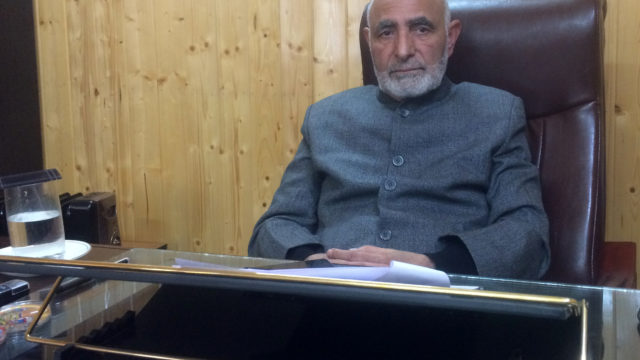
By Khursheed Wani
By the end of 2016, State Human Rights Commission (SHRC) completed two decades of its existence in the trouble-torn J&K.Kashmir. It is considered world’s highest militarized zone where human rights abuses by the state and non-state actors is a routine.
Two decades is enough time for an institution to establish and make its presence felt. The failure can be directly referred to the clumsy structure of the institution, the state’s insensitivity, deliberate or otherwise, to it and the lack of confidence among the people who are supposed to be benefited by establishing the institution.
The setting up of the commission under the provisions of J&K protection of human rights Act 1997 was quite interesting. It was established within a year’s time of Farooq Abdullah led National Conference regime that ended the longest spell of Delhi’s direct rule since 1990, the year when armed insurgency began. This was the worst period when the human rights of people, especially in Kashmir Valley and the Muslim majority pockets of Jammu region, were brutally abused.
SHRC was established to show the humane face of the government, to ‘flaunt’ that the state cared for its subjects and the people have accessibility to a mechanism that listens and ‘recommends’ justice. Ironically, the commission’s performance remained too disproportionate to the quantum of human rights issues on the ground and its existence paled into insignificance. The records of the state law department say that 5153 cases and complaints were registered with the commission’s headquarters in Srinagar and sub-offices in Jammu, Rajouri and Doda so far. Of them, 3995 cases were disposed off with recommendations to the government. Most of the times, the government has not acted upon the recommendations, providing an apt sobriquet of toothless tiger to the commission.
The recent appointment of Justice (retired) Bilal Nazki as xSHRC head is not de-linked with the history of the commission. The appointment, on October 25, came at a time when the Mehbooba Mufti-led PDP-BJP coalition was scripting another black chapter in the history of human rights abuses in Kashmir and Chenab valleys. To quell a spontaneous and massive public uprising after the killing of teenage rebel Burhan Wani and his two associates in south Kashmir on July 8, the state machinery used unbridled force killing 95 civilians, mostly teenage protesters and bystanders, and injured thousands others. The atrocious human rights abuses on diverse fronts, targeting the entire population during these four months–from denying right to communicate to snatching the vision of many people, is unprecedented. Such was the temerity of the state that it did not hesitate to put behind the bars the most prominent human rights defender Khurram Parvez for 76 days after denying him permission to travel to Geneva.
Obviously, the government’s purpose to bring the SHRC back into circulation is purposeful—to re-paint an image that it cares for basic rights of its ‘subjects’. But the approach is lackadaisical. At the outset, one among four members was appointed besides the Chairman. No process is in sight for the appointment of more members.
Justice Nazki is the only head of the SHRC who has served the highest judiciak position. He retired as chief justice of the Orissa High Court in November 2009 and has the experience of heading bar association as a practising lawyer, working as high court judge and chairman of Bihar SHRC. Despite the inherent lacunae in the functioning of the commission, Justice Nazki can be a bankable person to make it effective. He can pick up threads from the commission’s role in unearthing the mass graves in Kashmir.
In July 2006, Justice (retired) Ali Muhammad Mir quit in protest from the chairmanship of the commission citing “growing human rights violations in the state and non-implementation of commission’s recommendations.” In his resignation letter he described the commission as “eyewash to befool the world community” and rued that during his tenure not a single SHRC recommendation was implemented. “The SHRC has not been able to accomplish the object for which it was established. I waited for long in the hope that my efforts might yield some results,” Mir wrote to General (retd) SK Sinha, the then Governor in his resignation letter.
A decade after Justice Mir’s resignation, the state of affairs has not changed for good at the SHRC. However, Justice Nazki has taken over at a crucial stage when Mehbooba Mufti’s government is struggling to show its face to the public. By her own admission Mehbooba never imagined that people will be killed at a time when she was at the helm of affairs. She would like to offset the impact of what she did to the people in her next four years of rule. This throws the opportunity for Justice Nazki to play a different and effective role to strengthen the foundations of the SHRC and make it a dependable forum. Otherwise, his appointment won’t be more than the rehabilitation of a former judge, as has been the norm.














